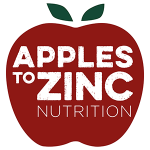Fat’s now big news but are confused with the fat minefield – which is good and which is bad?
Fats – What you need to know!
Since the 1980’s those who have wanted to lose weight, stay healthy or control their cholesterol levels have generally limited or cut out the fat in their diet. The supermarkets are literally saturated with low fat alternatives to almost every product imaginable. Why did this trend start?…….. Well, in the late 1980s research highlighted that reducing saturated fats in the diet was the single most important factor in improving health and diet. Rather than portraying this message, and coupled with the knowledge that fat contains double the number of calories as carbohydrate and protein the message sent out was a simple one – “Reduce the fat in your diet and be healthier!”
But with waistlines bulging and the health of the nation continuing to decline something has gone wrong. The low fat alternatives available to buy and recommended on many of the big name diet plans have fats being replaced with sugars and often added chemicals to help provide taste and texture but often provide us with the same number of calories as the original products. It isn’t just fats in the diet that make us fat but carbohydrates (sugars). Furthermore, the fats were also replaced by new “trans” fats which have been found to be even more damaging to health.
The good, the bad and the ugly….
We need to stop banning all fats and start to re-educate people on the differences between fats, the benefits of certain fats in our diet and provide tips on how you can make it work.
Put simply, we need to eat fats. In fact some fats are classed as “essential fats” as we really really do need them because we cannot produce them ourselves. Fats help us to absorb vitamins, grow, concentrate and learn, can improve skin health, keep us feeling fuller for longer, reduce inflammation, help in the regulation of blood pressure, hormone balance and a whole heap more. Do you need any more convincing?
What is important to understand is the difference between fats and those to include and avoid.
The Good: UNSATURATED FATS (OMEGA 3, 6 & 9)
Include these in your diet but in small quantities are they have clear benefits but are high in calories
Olive oil, avocados, nuts, beans, peanut butter (brands with no sugar added!), flaxseed, seeds, oily fish (e.g. mackerel, sardines, salmon), unheated seed & nut oils (e.g. coconut oil, walnut oil, seasame oil), lean meats, fish and eggs
The Bad: SATURATED FATS
Have in very small quantities and limit the frequency they are eaten as they have very limited health benefits and in large quantities are detrimental to health
High fat cuts of meats (lamb, pork, sausages and beef), chicken skin, butter, cheese, cream
The Ugly: TRANSFATS
Avoid these whenever possible as they can damage your cells, increase your risk of disease and increase cholesterol levels
All fried foods, processed pastries, pies, biscuits and cakes, crisps, chocolate (unless it’s dark with a high cocoa content) and margarines
So remember – foods such as prawns and eggs themselves may have many health benefits but if you have a huge quantity of them, fry them or serve them in a sauce laden with butters or creams it’s a completely different story!
If you would like more information on any of the information above or feel that you would benefit from a one to one consultation with me at Apples to Zinc in Maidenhead, then please contact me on info@applestozinc.co.uk or 07554 626765. I look forward to your call!
